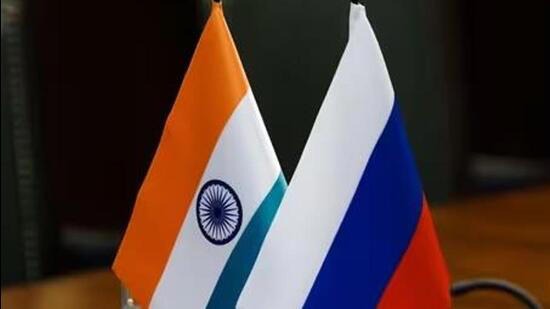Russia has tackled the issue of billions of rupees accumulated in Indian banks through investments in Indian stocks and infrastructure schemes and taken steps to ensure the flow of crude despite Western sanctions on State-owned shipping company Sovcomflot, people familiar with the matter said.
The billions of rupees had been amassed in special rupee vostro accounts (SRVAs) in India after New Delhi stepped up the purchase of discounted Russian crude since 2022 even as Moscow was shut out of Swift, the global payment system used by thousands of financial institutions, following the invasion of Ukraine.
Russia has used the rupees in SRVAs to make investments in stocks, government securities, infrastructure schemes and other areas, the people cited above said on condition of anonymity. They declined to go into details in view of the sensitivities involved.
“Most of the rupees accumulated in India have been used and this is no longer a problem,” one of the people said.
The two sides are still conducting most of their trade in their national currencies, with some payments for energy supplies being made in UAE dirhams, the people said. The Indian side has been loath to make payments in the Chinese yuan, especially in view of the dragging military standoff on the Line of Actual Control (LAC) that has taken India-China ties to an all-time low.
The breaking of the logjam over the accumulated rupees has also eased the problem of payments for defence deals that were in the pipeline. The Russian side is now expected to deliver the two remaining S-400 air defence systems, under a $5.4-billion deal for five systems, by 2025, the people said.
The accumulation of rupees in Indian banks was flagged last year by Russian foreign minister Sergey Lavrov, who had described the issue in May 2023 as a “problem”
Russia has also addressed issues arising from the US treasury department’s sanctioning of Sovcomflot, the State-owned shipping company and fleet operator, in February and the designation of 14 of its oil tankers as “blocked property”, the people said. The Russian side is taking care of the insurance of its oil tankers and is not dependent on Western firms, they said.
The people, however, acknowledged that Indian crude purchases had fluctuated in recent months and were linked to demand. In April, Russia’s share of Indian crude imports rose to nearly 40%, up from 30% in March, and marking a nine-month high. “The figure moves up and down,” the person cited above said.
Two officials aware of developments said that in order to ensure India’s energy security, domestic refiners buy crude from across the world and the main consideration is purely commercial – assured supply and economical rate. Key suppliers are more than two dozen oil producing countries, including Russia, which often gives good discounts.
There has not been any issue related to payments, which are made in local currencies, the officials said. Many countries, including Russia, have SRVAs in India for trade settlement in national currencies.
Russia is the second major import source for India, after China. According to official data, India imported goods worth $55.6 billion from Russia in 2023-24 (April-February), a 37% year-on-year increase, mainly because of petroleum imports (about $46 billion).
Other items imported from Russia in this period were coal ($3.5 billion), fertilisers ($1.95 billion), and vegetable oil ($1.12 billion). India’s merchandise exports to Russia during April 2023-February 2024 were worth $3.82 billion, posting about 36% year-on-year growth. The trade deficit in this period was $51.78 billion in favour of Russia and most of this was maintained in about three dozen SRVAs.
A SRVA is held by an Indian bank on behalf of a foreign bank in the local currency and often used for trade settlements. “We have such arrangements with about two dozen countries, including Russia, the UK, Germany, Sri Lanka and Bangladesh,” one official said.
The officials said it is not possible to tell the amounts lying in vostro accounts from individual countries, but trade deals are done on commercial principles and funds in vostro accounts can be used for purposes other than trade settlements, such as investments in government securities, projects and other permissible activities.
Money in SRVAs is like foreign exchange inflow converted into rupees. According to RBI guidelines, funds in SRVAs can be used for any permissible current and capital account transactions under the Foreign Exchange Management Act (FEMA), the second official said.
Funds in SRVAs can also be invested in avenues of investments mutually agreed between the countries, subject to compliance with regulatory and statutory guidelines, he said.
The RBI set up a mechanism in July 2022 to enable international trade settlement in Indian rupees, which aimed to cut transaction costs, reduce exchange rate risks for Indian traders and avoid a payment crisis due to unilateral sanctions imposed by countries such as the US.

